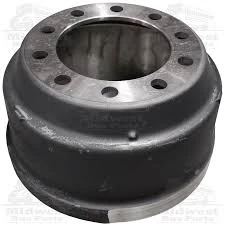
-
 Afrikaans
Afrikaans -
 Albanian
Albanian -
 Amharic
Amharic -
 Arabic
Arabic -
 Armenian
Armenian -
 Azerbaijani
Azerbaijani -
 Basque
Basque -
 Belarusian
Belarusian -
 Bengali
Bengali -
 Bosnian
Bosnian -
 Bulgarian
Bulgarian -
 Catalan
Catalan -
 Cebuano
Cebuano -
 Corsican
Corsican -
 Croatian
Croatian -
 Czech
Czech -
 Danish
Danish -
 Dutch
Dutch -
 English
English -
 Esperanto
Esperanto -
 Estonian
Estonian -
 Finnish
Finnish -
 French
French -
 Frisian
Frisian -
 Galician
Galician -
 Georgian
Georgian -
 German
German -
 Greek
Greek -
 Gujarati
Gujarati -
 Haitian Creole
Haitian Creole -
 hausa
hausa -
 hawaiian
hawaiian -
 Hebrew
Hebrew -
 Hindi
Hindi -
 Miao
Miao -
 Hungarian
Hungarian -
 Icelandic
Icelandic -
 igbo
igbo -
 Indonesian
Indonesian -
 irish
irish -
 Italian
Italian -
 Japanese
Japanese -
 Javanese
Javanese -
 Kannada
Kannada -
 kazakh
kazakh -
 Khmer
Khmer -
 Rwandese
Rwandese -
 Korean
Korean -
 Kurdish
Kurdish -
 Kyrgyz
Kyrgyz -
 Lao
Lao -
 Latin
Latin -
 Latvian
Latvian -
 Lithuanian
Lithuanian -
 Luxembourgish
Luxembourgish -
 Macedonian
Macedonian -
 Malgashi
Malgashi -
 Malay
Malay -
 Malayalam
Malayalam -
 Maltese
Maltese -
 Maori
Maori -
 Marathi
Marathi -
 Mongolian
Mongolian -
 Myanmar
Myanmar -
 Nepali
Nepali -
 Norwegian
Norwegian -
 Norwegian
Norwegian -
 Occitan
Occitan -
 Pashto
Pashto -
 Persian
Persian -
 Polish
Polish -
 Portuguese
Portuguese -
 Punjabi
Punjabi -
 Romanian
Romanian -
 Russian
Russian -
 Samoan
Samoan -
 Scottish Gaelic
Scottish Gaelic -
 Serbian
Serbian -
 Sesotho
Sesotho -
 Shona
Shona -
 Sindhi
Sindhi -
 Sinhala
Sinhala -
 Slovak
Slovak -
 Slovenian
Slovenian -
 Somali
Somali -
 Spanish
Spanish -
 Sundanese
Sundanese -
 Swahili
Swahili -
 Swedish
Swedish -
 Tagalog
Tagalog -
 Tajik
Tajik -
 Tamil
Tamil -
 Tatar
Tatar -
 Telugu
Telugu -
 Thai
Thai -
 Turkish
Turkish -
 Turkmen
Turkmen -
 Ukrainian
Ukrainian -
 Urdu
Urdu -
 Uighur
Uighur -
 Uzbek
Uzbek -
 Vietnamese
Vietnamese -
 Welsh
Welsh -
 Bantu
Bantu -
 Yiddish
Yiddish -
 Yoruba
Yoruba -
 Zulu
Zulu
Feb . 11, 2025 11:46
Back to list
drum brake parts and functions
Drum brakes, a crucial component in many vehicles, offer a blend of simplicity and effectiveness, making them a mainstay in the automotive industry for several decades. Understanding the different drum brake parts and their functions is essential for both automotive enthusiasts and everyday drivers who seek to maintain their vehicles optimally. This article delves into the intricacies of drum brake systems, covering their components, roles, and the expertise needed for their maintenance.
An often underappreciated yet critical component is the brake return springs. These springs retract the brake shoes back to their original position after the brakes are released, maintaining structural integrity and readiness for the next use. Weak or broken springs can result in dragging brakes, which could lead to excessive wear and reduced performance. The adjuster mechanism, another essential part, ensures that the brakes remain properly aligned and efficient. This mechanism compensates for the wear of the brake shoes over time, guaranteeing that they remain a correct distance from the drum. Manual or self-adjusting, this component's function is critical for maintaining consistent braking performance and should be checked and serviced regularly. Crucially, a thorough understanding of these components, coupled with regular maintenance, enhances a drum brake's efficiency and lifespan. Each part, regardless of how minor it might seem, contributes to the overall functionality and safety of the braking system. Neglecting even one component can compromise the entire system, stressing the need for professional expertise in inspection and repair. As we advance in automotive technologies, drum brakes continue to evolve, incorporating new materials and engineering solutions to enhance performance. For those in pursuit of automotive mastery, a sound knowledge of drum brake parts and functions underscores their commitment to safety, reliability, and mechanical proficiency. By focusing on expertise and authoritative maintenance practices, drivers and mechanics alike can trust the reliability of their drum brake systems, ensuring safety and performance on every drive.


An often underappreciated yet critical component is the brake return springs. These springs retract the brake shoes back to their original position after the brakes are released, maintaining structural integrity and readiness for the next use. Weak or broken springs can result in dragging brakes, which could lead to excessive wear and reduced performance. The adjuster mechanism, another essential part, ensures that the brakes remain properly aligned and efficient. This mechanism compensates for the wear of the brake shoes over time, guaranteeing that they remain a correct distance from the drum. Manual or self-adjusting, this component's function is critical for maintaining consistent braking performance and should be checked and serviced regularly. Crucially, a thorough understanding of these components, coupled with regular maintenance, enhances a drum brake's efficiency and lifespan. Each part, regardless of how minor it might seem, contributes to the overall functionality and safety of the braking system. Neglecting even one component can compromise the entire system, stressing the need for professional expertise in inspection and repair. As we advance in automotive technologies, drum brakes continue to evolve, incorporating new materials and engineering solutions to enhance performance. For those in pursuit of automotive mastery, a sound knowledge of drum brake parts and functions underscores their commitment to safety, reliability, and mechanical proficiency. By focusing on expertise and authoritative maintenance practices, drivers and mechanics alike can trust the reliability of their drum brake systems, ensuring safety and performance on every drive.
Next:
Latest news
-
What Are Drum BrakesNewsJul.07,2025
-
Understanding Brake Drum MaterialNewsJul.07,2025
-
Semi-Trailer Brake Drum: A Key Component for Extreme Loads and Long-Distance TransportNewsJul.07,2025
-
Drum Brake Pads for SaleNewsJul.07,2025
-
Brake Drums for SaleNewsJul.07,2025
-
Brake Drum ManufacturerNewsJul.07,2025
-
Aluminum Brake Drums: The Future of High-Performance CarsNewsJul.07,2025
